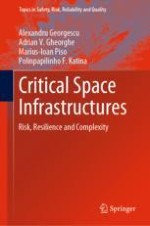This book introduces readers to the topical area of CSI: critical space infrastructure, which is defined as an emerging domain of systems-of-systems encompassing hardware, workforce, environment, facilities, business and organizational entities. Further, it includes unmanned air systems, satellites, rockets, space probes, and orbital stations, and involves multi-directional interactions essential for maintenance of vital societal functions (i.e., health, safety, economic and social well-being), the loss or disruption of which would have significant impact on virtually any nation. The topics covered include the main elements of CSI, CSI taxonomy, effects of CSI on other infrastructure systems, establishing quantitative and qualitative parameters, global and national effects of CSI failure, cascading disruptive phenomena, chilling effects in various fields, CSI protection, deliberate threats to space systems (e.g., electromagnetic pulse attacks), space governance, and a path forward for CSI research. Modern society is highly dependent on the continuous operation of critical infrastructure systems for the supply of crucial goods and services including, among others, the power supply, drinking water supply, and transportation systems; yet space systems – which are critical enablers for several commercial, scientific and military applications – are rarely discussed. This book addresses this gap.
